Making health services adolescent friendly in Japan ---- Laidlaw Leadership in Action (LiA) Final Reflection
For my Leadership in Action (LiA) project, I was very honoured to collaborate with PILCON to make sexual and reproductive health and rights (SRHR) services more adolescent-friendly in Japan. PILCON is a Japanese NPO organisation working on SRHR, and the team has incredible connections with politicians, health professionals and individual activists. It has been consistently supporting SRHR through a range of programmes such as delivering sex education workshops and policy advocacy to make emergency contraception pills available over the counter. This summer, apart from continuing all the existing programmes, we started a new project named “YOUTH HEALTHCARE ACTION”, focusing on creating a youth-friendly environment for young people to access SRHR services.
We aim to have several outputs: We will collaborate with Rutgers University and FSUM to produce training videos introducing youth-friendly SRHR services to health professionals. We will design an additional leaflet for clinics to check if they meet the standards of a youth-friendly clinic. We will also build a website targeting young people to help them find the youthly friendly services suitable for them and publish posters to spread the information. We also decided to hold a final event open to the public to discuss how youth-friendly SRHR services can be improved in Japan and launch everything we did.
In the first two weeks, I worked remotely on reviewing literature and determining the contents of the materials. Then I spent four weeks in Tokyo, meeting our key members in person every weekday and preparing for the final event. Communication with PILCON members was essential during the entire process to make the material contents sound natural in the Japanese context. (I’m so grateful to work with such an incredible team where everyone is so friendly and passionate. Special thanks to Kazuko, who helped me so much with the language barrier). Our team also consulted health professionals and young activists for advice and adjusted the contents accordingly. Finally, we collaborated with designers and had the following outputs.
Youth-Friendly Poster (Draft):
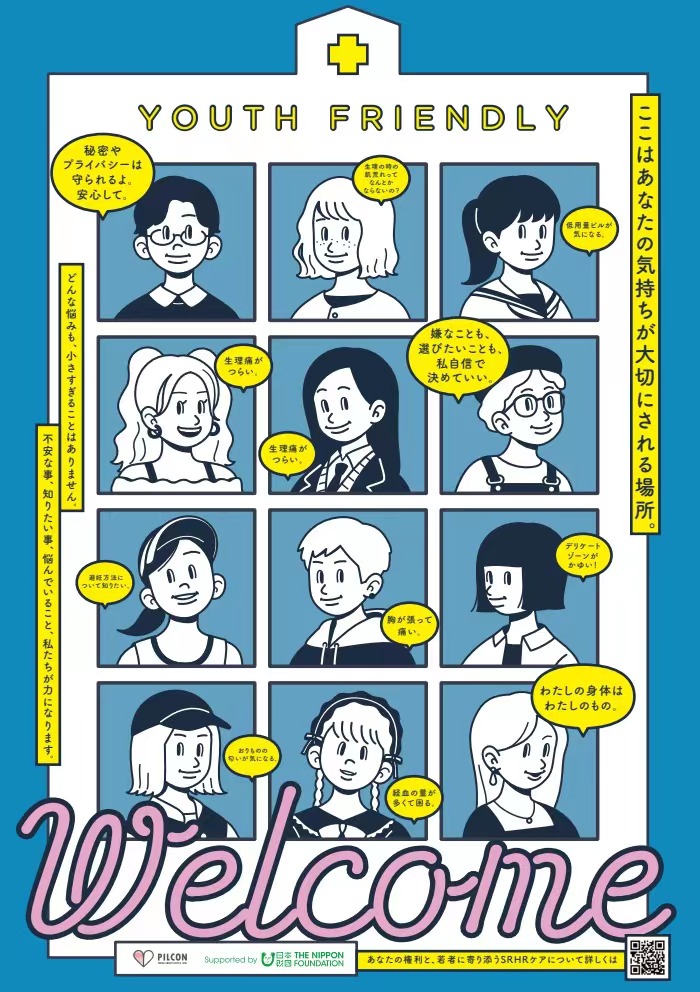
Youth-Friendly Leaflet (Draft) :
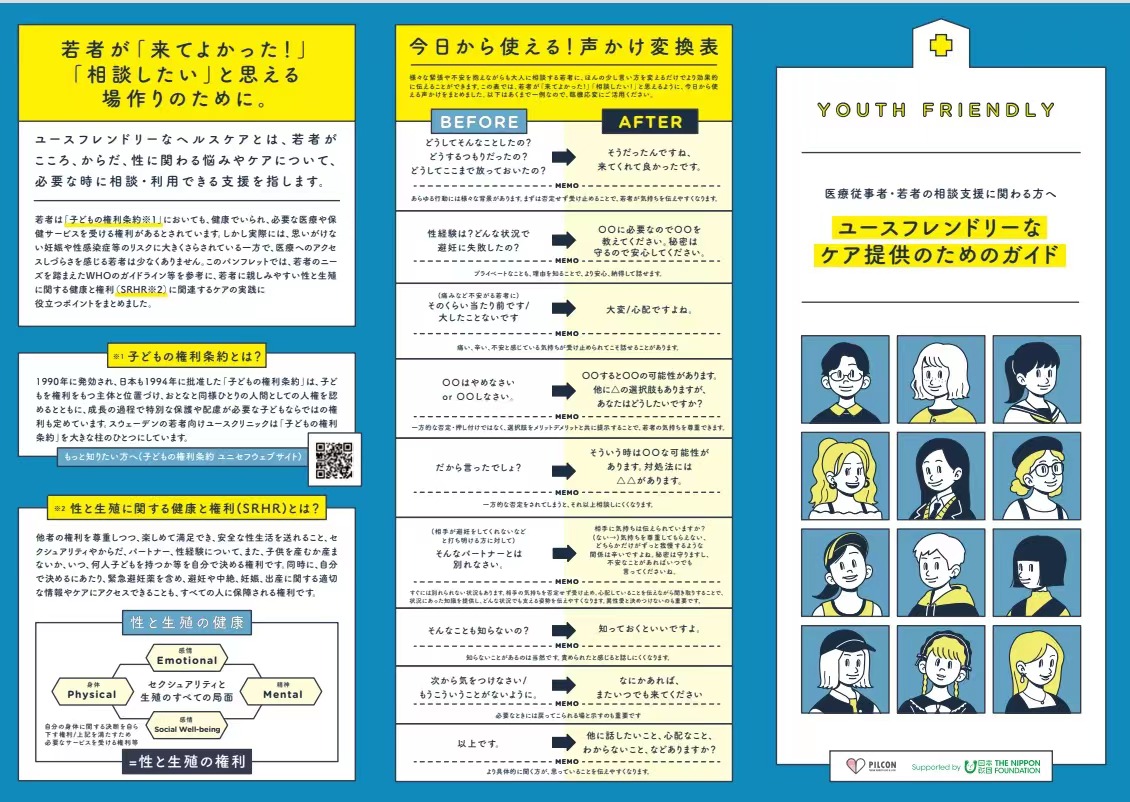

Youth Healthcare Action Website: YOUTH HEALTHCARE ACTION
At the end of August, more than a hundred participants signed up for our final event, where we invited young people and health professionals to talk about youth-friendly SRHR services from their perspectives. We also had the chance to use Mentimeter so that we could hear from our audience.
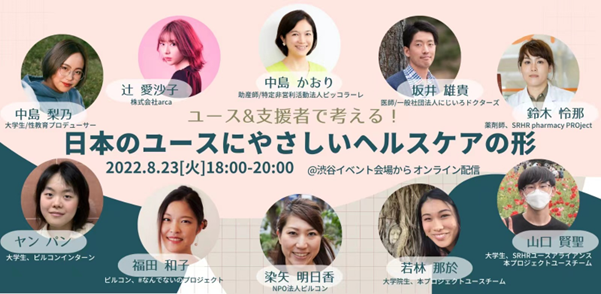
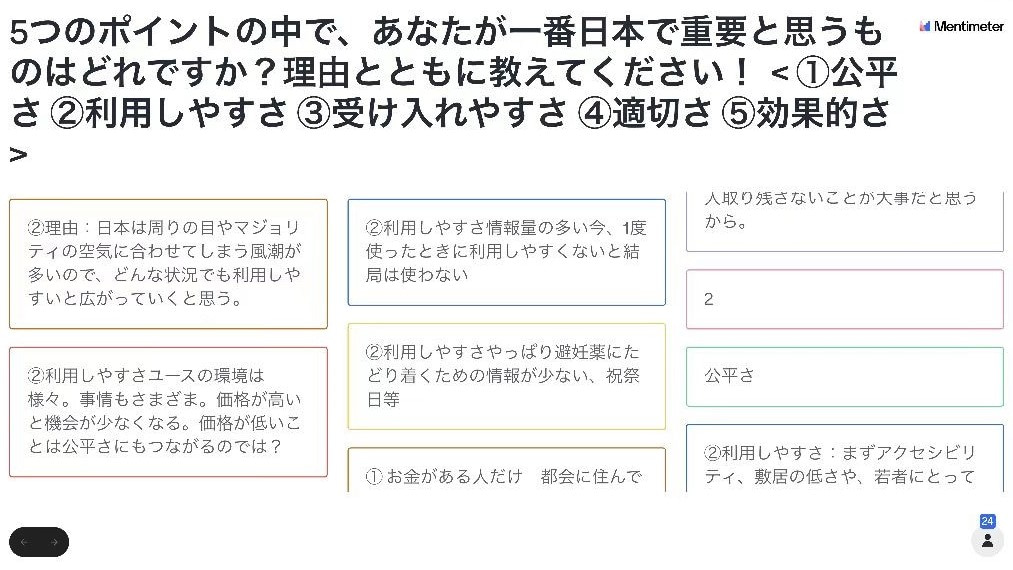
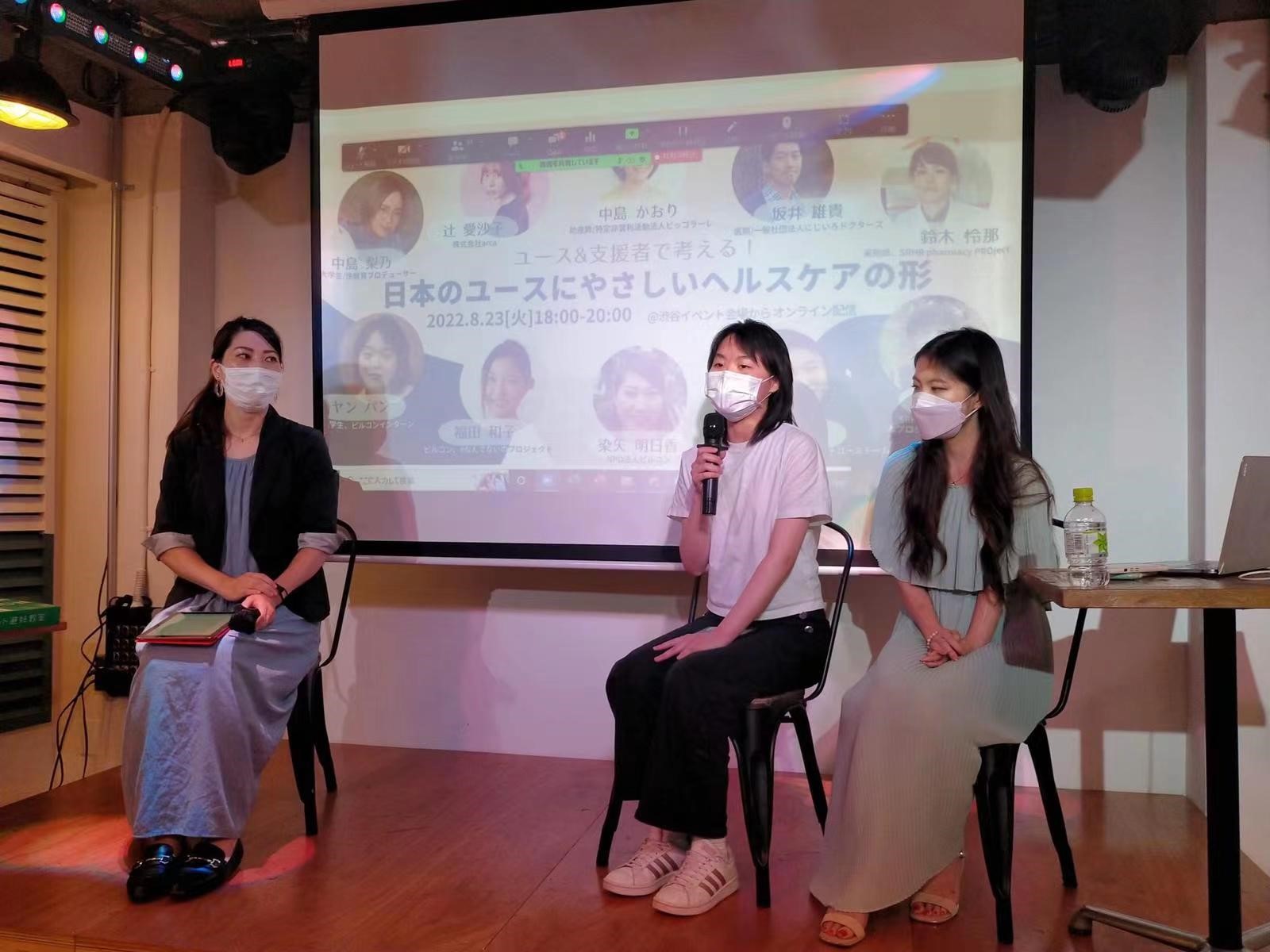
In addition to the main project, I also joined other PILCON projects to facilitate my understanding of young people’s needs. For example, I acted as a facilitator during sex education workshops. I encouraged young people to discuss what difficulties they have when they seek help related to SRHR and how they want the system to be improved. I was also responsible for data analysis of the past 16 months’ mail consultation records, where I investigated the problems that each year group is the most concerned about and how they change over time. One of the most remarkable experiences was attending the press conference to advocate
the availability of emergency contraceptive pills at the pharmacy. To demonstrate the necessity of our proposal, we conducted a survey to investigate people’s opinions on getting the prescription of emergency contraceptive pills from gynaecologists. It was evident that young people would be discouraged from getting the prescription due to the fear of being judged by the gynaecologist. This is because being sexually active at a young age is against social norms and talking about sex is still a stigma in Japan. The result of the questionnaire and all the heart-breaking personal experiences I heard urged me to edit the YOUTH HEALTHCARE ACTION material contents over and over again.
Even though the “final event” has ended, this summer is only the start of a long journey: The training videos are in production. The posters and leaflets will be distributed to clinics. The Japanese translation of the WHO guideline Making health services adolescent friendly will soon be published. We will also update the website continuously, such as listing clinics that provide youth-friendly services and launching youth-friendly SRHR events. I’m confident that this first step will initiate a much more significant long-term impact in Japan.
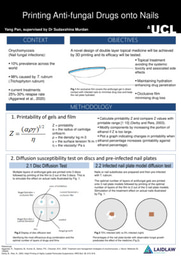

Please sign in
If you are a registered user on Laidlaw Scholars Network, please sign in